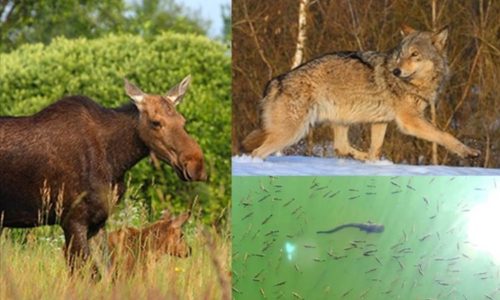
source: uopnews.port.ac.uk
Here are some amazing videos taken of the area and wildlife taken in the vicinity of Chernobyl that has become a highly popular topic of discussion with online viewers from all over the world!
It has been just over 30 years since the Chernobyl nuclear accident happened on the 26th of April in 1986. Although human beings are unable to live in this highly radiated area, it is now a paradise where various kinds of animals live and thrive!

source: uopnews.port.ac.uk
Here is a video released last month showing the abundant wildlife flourishing in the Chernobyl area!
See Video Here
source: YouTube
There are now huge numbers of fish and catfish now living in the waters surrounding the damaged nuclear power plant.
For animals, human existence is more harmful than nuclear radiation
Despite the high radiation levels, various species of animals have dramatically increased as they are not threatened by human hunting and habitat destruction. According to Chernobyl ecosystem investigators, “For many animals, even if there is a harmful influence of radioactivity, it does not appear to constrain the number of individual animals thriving in the area”. Further research is needed to fully understand the adverse effects radiation on the wildlife in the Chernobyl area.
Wildlife liberated from the “oppression of human living”.




source: uopnews.port.ac.uk
Survey results announced last October reveal that the Ukraine’s most inhospitable areas for people are now inhabited by many different animals such as deer, wild boar and wolves. In addition, the number of Elk, moose and other such species are significantly increasing every year. compared with the 1st to 10th year after the accident.
Having no human beings in the vicinity appears to create a more comfortable environment for animals.
source: ://www.afpbb.com / uopnews.port.ac.uk


